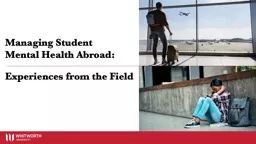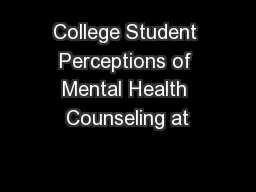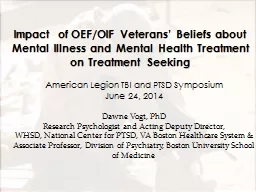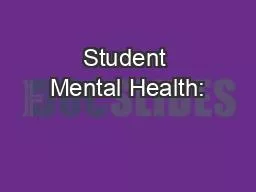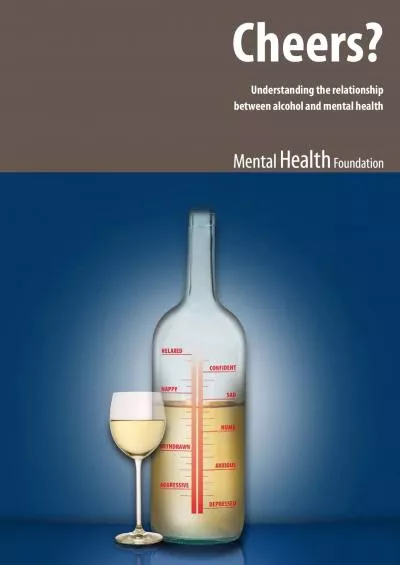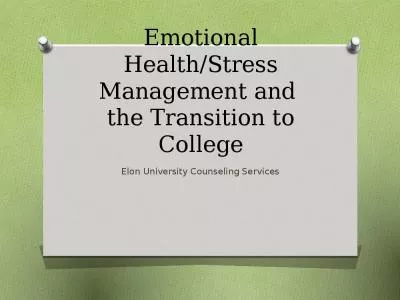PPT-Managing Student Mental Health Abroad:
Author : natalia-silvester | Published Date : 2020-04-04
Experiences from the Field Goals for this Teaching Roundtable Better understand the current state of student mental health amp the roles that various offices have
Presentation Embed Code
Download Presentation
Download Presentation The PPT/PDF document " Managing Student Mental Health Abroad:" is the property of its rightful owner. Permission is granted to download and print the materials on this website for personal, non-commercial use only, and to display it on your personal computer provided you do not modify the materials and that you retain all copyright notices contained in the materials. By downloading content from our website, you accept the terms of this agreement.
Managing Student Mental Health Abroad:: Transcript
Download Rules Of Document
" Managing Student Mental Health Abroad:"The content belongs to its owner. You may download and print it for personal use, without modification, and keep all copyright notices. By downloading, you agree to these terms.
Related Documents

